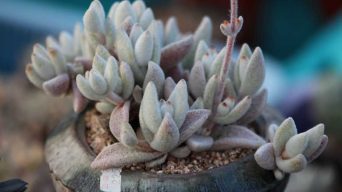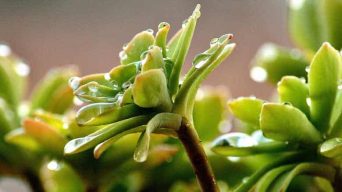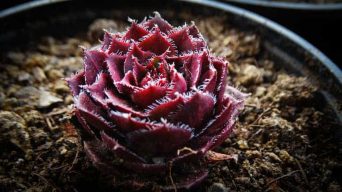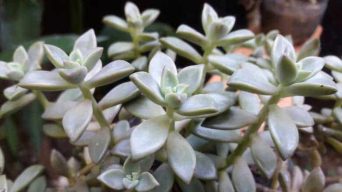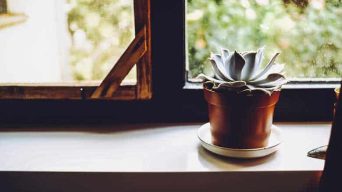Succulents are one of the easiest plants to take care of. They do not require a lot of water and do well in dry climates.
However, over time, they must be repotted into new pots to continue growing and thriving.
Succulents do not need to be repotted immediately. But they do need to be repotted at least once every two years.
The best time of year to repot a succulent is at the beginning of the growing season.
This article will discuss when succulents must be repotted to ensure your plant grows healthy!
Why Do Succulents Need To Be Repotted
Repotting succulents helps them grow and is also necessary for the health of your plant.
Repotting helps the roots grow and increase in size to support larger plants and not become root-bound.
It also encourages new growth because the plant has better access to nutrients, light, and air circulation around its root system.
Repotting succulents can also encourage blooming because new growths will have more access to light, air circulation, and nutrients than in a pot that is too small.
Unlike other plants, succulents typically do not need to be repotted yearly. Some thrive in their pot for many years before needing to be transplanted outdoors.
Repotting succulents is necessary for preserving their health. Usually, one should do this once every two to three years.
When growing succulents, it is essential to know when succulents need to be repotted and how often.
It can often be challenging to identify when your succulent needs to be repotted, but there are a few signs you should keep an eye out for.
When Should You Repot Your Succulents
Several factors could necessitate the repotting of your succulent plant.
1. The Pot Is Too Small
The first reason for repotting your succulent plant is that the container they are in may be too small.
When succulent roots do not have enough room to grow, it can cause problems like stunted growth or leaves turning yellow and dropping off prematurely.
You must use a new pot with plenty of room so that there’s no harm done to the health of your plants!
In this case, you will want to replace the old container with one at least twice as large. Succulents need space because their root systems extend far from themselves.
So take care when choosing a new pot for them; if you don’t do it right, you could do more harm than good.
2. The Pot Has Drainage Problems
The second reason for repotting your succulents is if the container they are in seems to have a problem with excess water.
If the potting soil of the pot does not dry out, it can lead to root rot.
Succulent plants need loose, well-draining soil like a cactus soil mix. A clay pot may be necessary as it holds moisture better than most others do.
However, many people forget this when first getting their succulents and not using the right potting mix or pot.
So, if your plants show signs of being too wet or leaves turning yellow, think about getting new pots with better drainage immediately.
3. You Do Not Have the Right Soil for Them
Another reason you might need to repot your succulent is if their pot contains a type of soil that they do not do well in.
This can cause damage and stunted growth because it’s not providing what they need to survive.
For instance, cacti and succulents prefer loose, porous soils like those made from peat moss or vermiculite.
They also do best when planted with gritty materials such as coarse sand or gravel at the plant’s base so that roots can grow freely without being smothered by other things-especially if these items contain nutrients too!
The plant will do best in a cactus or succulent soil mix, so do not heedlessly replace pots without considering this for your repotted succulent!
4. You Purchase a New Succulent
The fourth reason for repotting a succulent plant is if you have purchased an entirely new plant. It’s important to do this for the sake of their health and development!
New plants usually come in a plastic container, which tends to do more harm than good for plants. It complicates things when you need to transplant succulent plants into new pots and can do more damage if the plant is small or has delicate roots (such as a cactus plant).
It’s recommended that succulents come in clay containers with holes at the bottom; they’ll be able to “breathe” better without being smothered by their surroundings!
5. Your Succulent Looks Unhealthy
The fifth reason for repotting a succulent plant is if it’s showing any signs of being unhealthy. If it’s not thriving as well as before, do something about that!
This is especially important if they’ve grown large and seem to be taking up more room than they need (growing out of the pot). It can also show itself in yellowing leaves or stunted growth.
If you do not do something to improve the quality of their container, they may die!
Fortunately, repotting is an easy way to fix this problem.
It’s always a good idea to give succulents fresh soil and pots to continue thriving in optimal conditions.
6. The Pot Is Damaged
Another reason for repotting your succulent is if the pot has become damaged. It’s important to do this because it can cause water damage and other issues!
You may even have noticed that there are cracks or holes in the pot-especially at its base.
This can do a lot of damage to roots as they cannot get the oxygen and water they need.
Repotting will help to fix the problem and allow space for healthier roots.
7. The Roots Are Growing Out of the Pot
Another reason for repotting your succulent is if their roots are growing out of the container. This can do a lot of damage to them, and it’s an indication that they need more space!
If you do nothing about this, they may become root-bound or damaged by other things in the surrounding area.
This will also lead to stunted growth, yellowing leaves, and unnecessary stress on their system.
Repotting solves these problems because it provides room for healthy roots and additional nutrients, which allow healthier conditions overall!
8. Your Succulent Stop Growing
Another sign of needing repotting is if your succulent plant has stopped growing.
This can happen for a few reasons, but their pot may be too small or densely packed with roots!
This means they do not have enough room to grow and will also become stunted with time.
9. Your Succulent Is Unstable
If your succulent is unstable, do something about that too! They need to be stable and not wobble or fall over constantly.
This could happen if their pot were loosely packed in the first place, or maybe they’ve grown larger than expected.
The succulent’s root system will also become more compacted as it grows taller, so repotting might do your plant some good there, too (as long as you give it enough room).
When you observe plants beginning to fall over or break, it’s best to repot the plant.
If anything like that happens with yours, do what needs to be done quickly by giving them plenty of space at both the bottom and height!
10. Your Succulent Is Root-Bound
The final reason for repotting your succulent plants is if they’re showing signs of being ‘root-bound.
This means the plant’s roots have grown together in a dense ball and do not have the space needed to grow properly. It can also lead to stunted growth!
If you do nothing, this problem will only get worse over time and eventually take its toll on health or even kill them off entirely.
However, with some fresh soil and pots, these problems can be avoided altogether!
11. You Want To Do It
Lastly, if you feel like your succulent plant needs a change for the sake of variety, then do something about that too! It’s always good when plants have access to new things and environments.
This is especially true with succulents since they grow best in small pots. But don’t worry; if drainage holes exist, repotting into a larger pot won’t do any harm, so go ahead and do what feels right!
Final Thoughts
Succulents need repotting from time to time–don’t let them get outgrown or unhealthy because of this (or other reasons).
Make sure you know how much space they need at their root level before deciding on which type of pot to get them.
As long as they have drainage holes, larger pots do not do any harm. Take care of your succulents to ensure they are happy and healthy!



